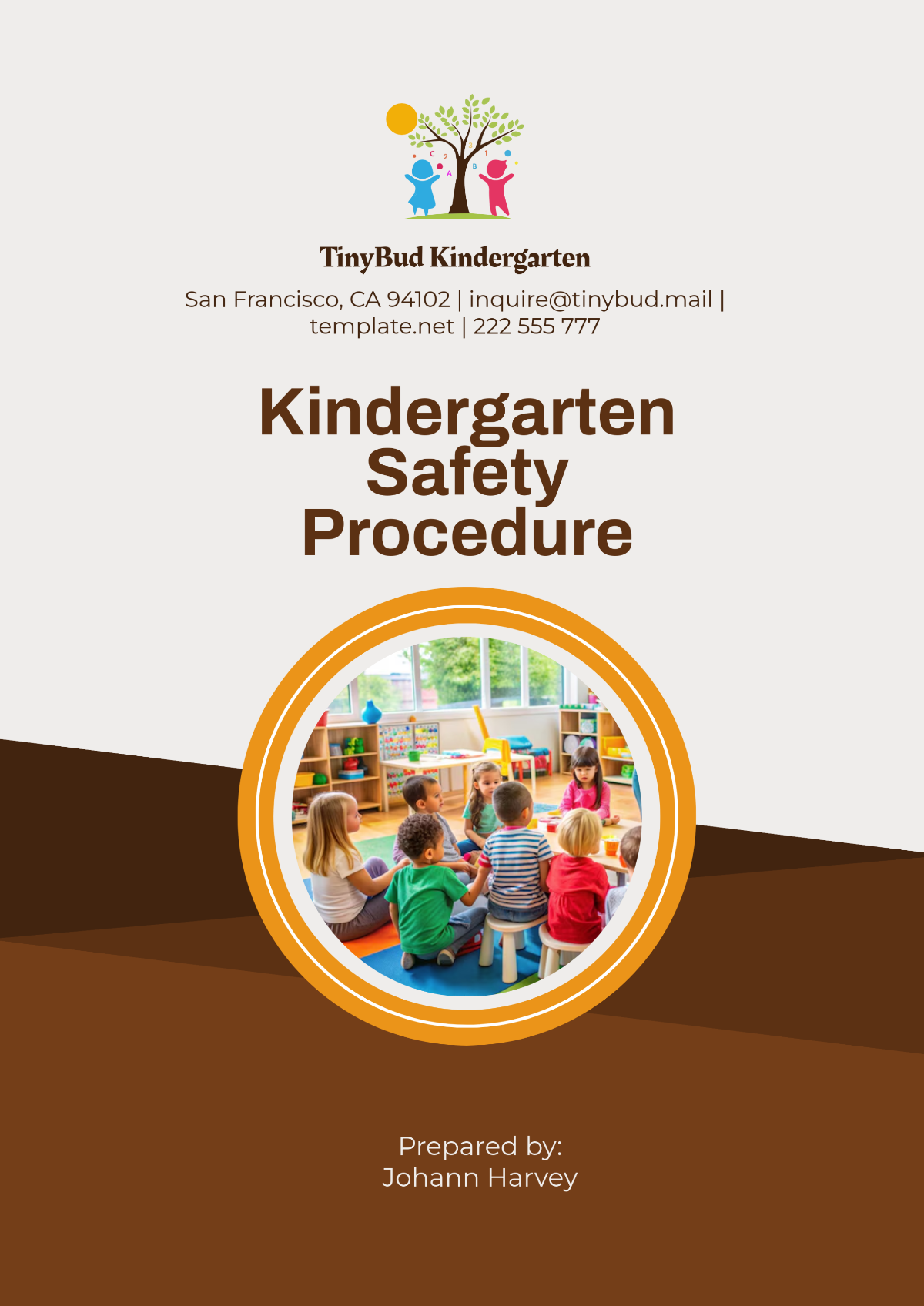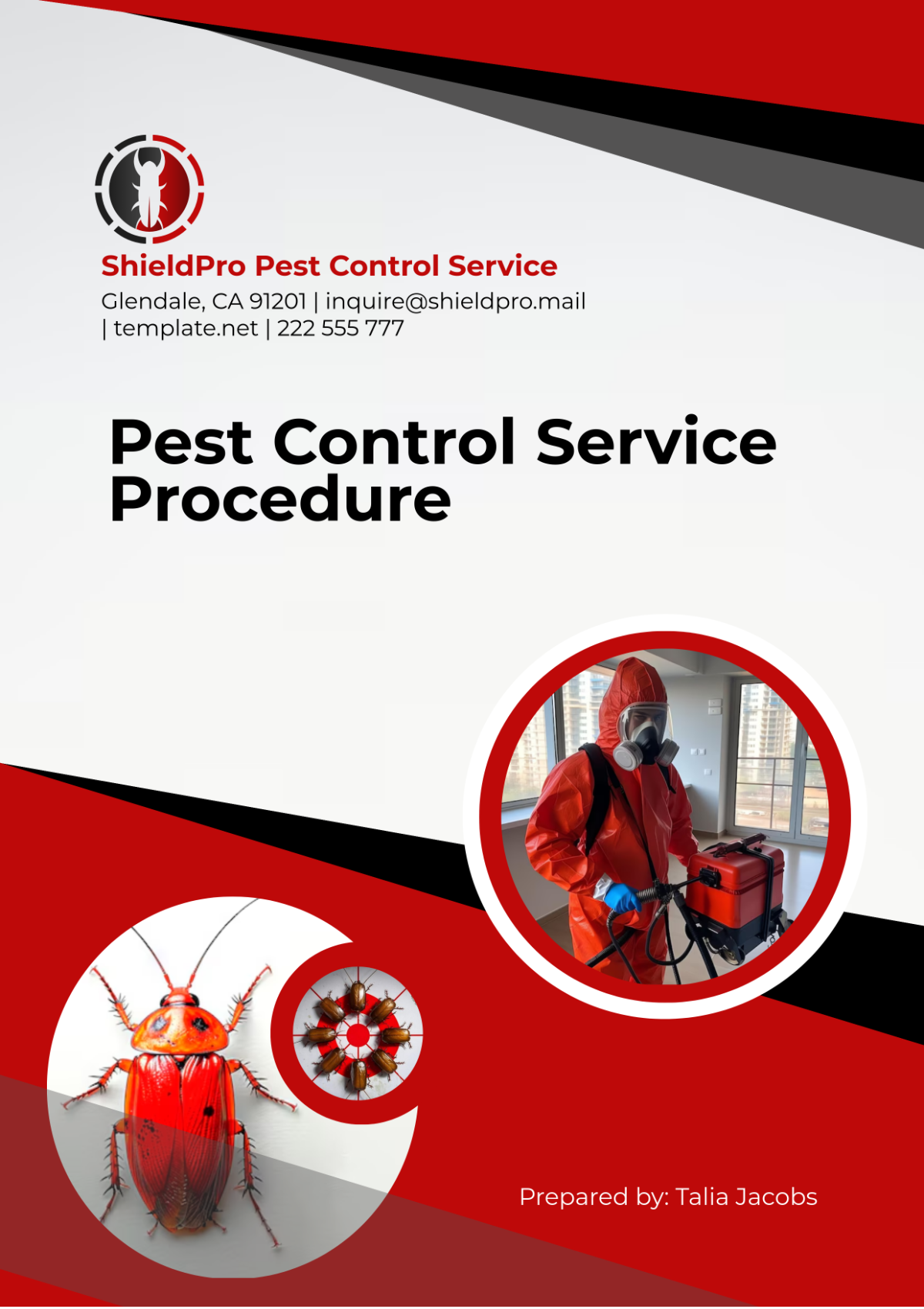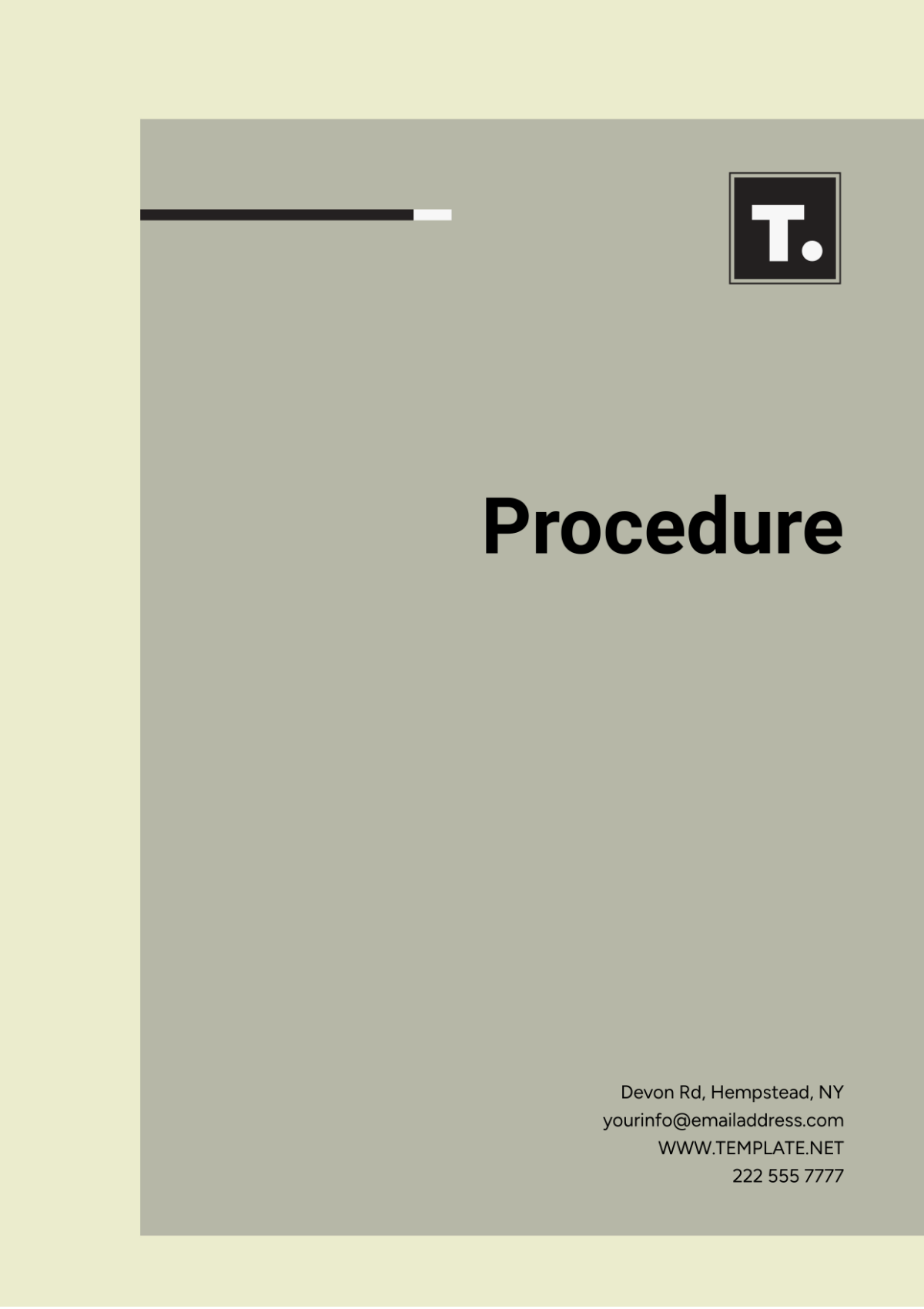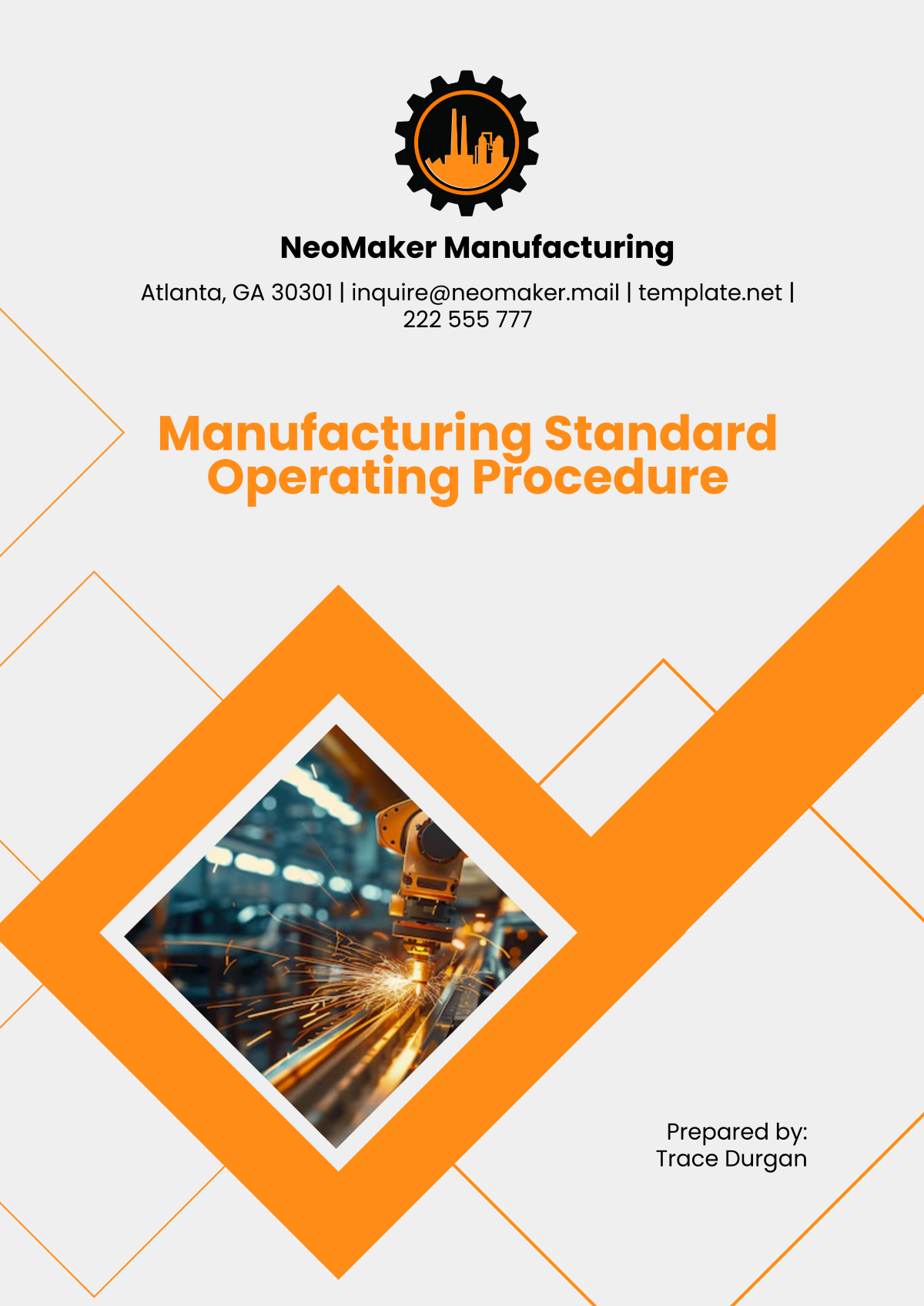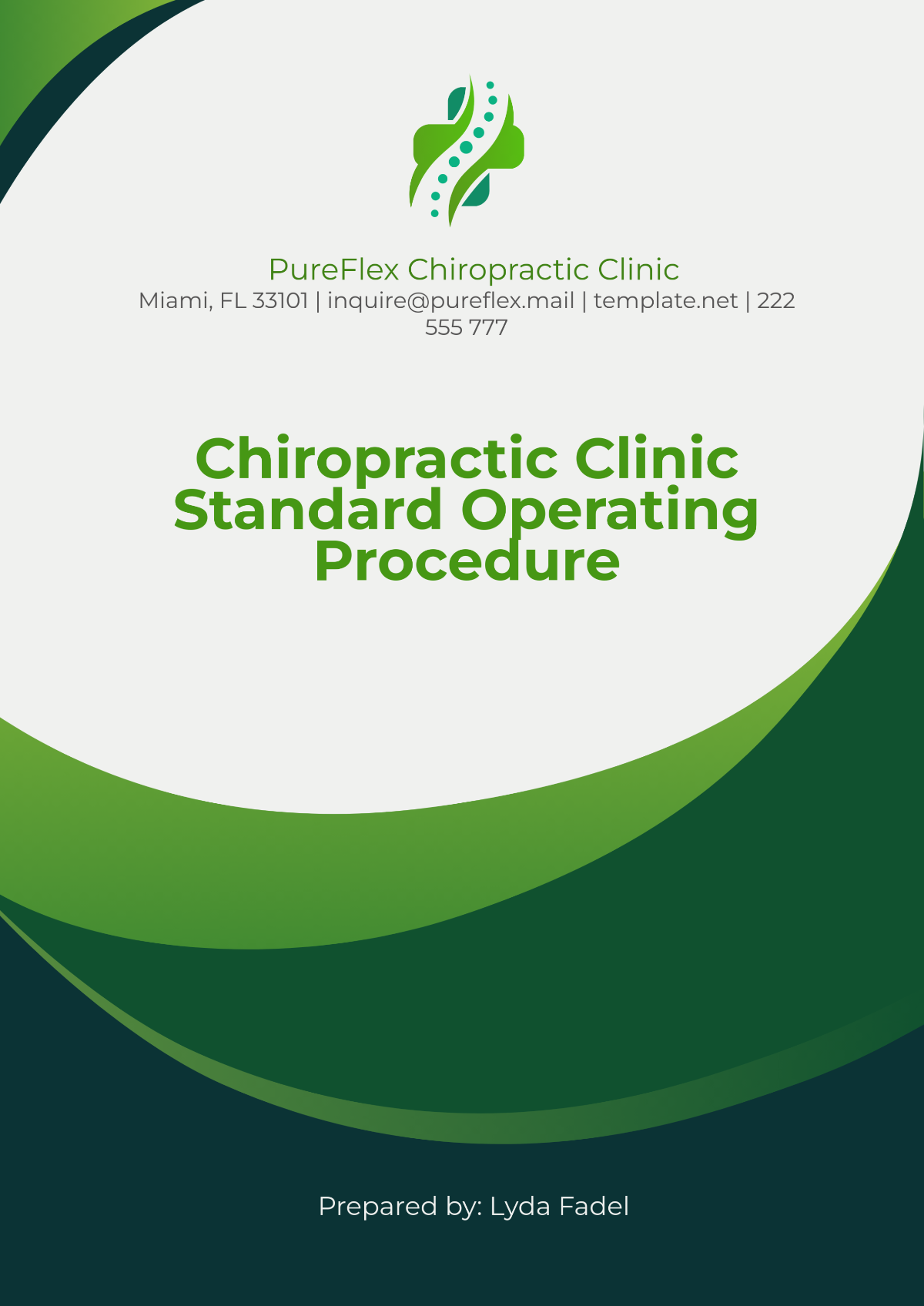Free Transport %26 Logistics Standard Operating Procedure Template
Transport & Logistics Standard Operating Procedure
Effective Date: January 1, 2050
Review Date: January 1, 2052
I. Introduction
A. Purpose
The purpose of this Standard Operating Procedure (SOP) is to provide a comprehensive framework for managing transport and logistics operations at [Your Company Name]. This SOP aims to standardize procedures, improve operational efficiency, and ensure the safe and timely movement of goods across various transportation modes. By implementing this SOP, [Your Company Name] seeks to achieve excellence in logistics management, meet customer expectations, and comply with all relevant regulations and sustainability goals.
B. Scope
This SOP encompasses all aspects of transport and logistics operations, including:
Modes of Transport: Road, rail, sea, and air.
Operations Covered: Planning, scheduling, execution, and delivery.
Personnel Involved: Employees, contractors, and third-party logistics providers (3PLs).
Geographical Coverage: Local, national, and international logistics.
C. Objectives
The primary objectives of this SOP are to:
Standardize Operations: Implement consistent procedures across all transport and logistics functions.
Enhance Efficiency: Optimize delivery times and reduce operational costs through improved planning and execution.
Ensure Safety: Maintain high safety standards to protect personnel, goods, and the environment.
Achieve Compliance: Adhere to all regulatory requirements and industry standards.
Promote Sustainability: Reduce environmental impact through sustainable practices and technologies.
II. Definitions
Term | Definition |
|---|---|
Transport & Logistics | The comprehensive process of managing the movement, storage, and distribution of goods from point A to point B, utilizing various transportation modes. |
Third-Party Logistics Provider (3PL) | An external service provider that handles transportation, warehousing, and logistics functions on behalf of [Your Company Name]. |
ETA (Estimated Time of Arrival) | The projected time a shipment is expected to reach its destination, factoring in current conditions and planned route. |
Bill of Lading (BOL) | A legal document issued by a carrier detailing the type, quantity, and destination of the goods being transported. |
Fleet Management | The process of managing a company's fleet of vehicles to ensure optimal performance, maintenance, and cost efficiency. |
III. General Guidelines and Principles
A. Operational Safety
Ensuring safety in transport and logistics operations is critical for protecting personnel, goods, and equipment. The following guidelines must be adhered to:
Personal Protective Equipment (PPE): All personnel involved in loading, unloading, and handling must wear appropriate PPE, including helmets, gloves, and reflective vests.
Vehicle Safety: Vehicles should be regularly inspected and maintained. Safety features such as fire extinguishers, first-aid kits, and emergency signaling devices must be present and functional.
Driver Qualifications: Drivers must possess valid licenses and relevant certifications for the type of vehicle they operate. Special training is required for handling hazardous materials and operating specialized vehicles.
Incident Reporting: Any accidents or safety incidents must be reported immediately. A detailed report should be completed, including the nature of the incident, involved parties, and corrective actions taken.
B. Sustainability
[Your Company Name] is committed to minimizing its environmental impact. The following measures should be taken to promote sustainability:
Vehicle Choice: Prioritize the use of electric or hybrid vehicles for transport operations where feasible. Explore the use of alternative fuels and energy-efficient technologies.
Route Optimization: Use route planning software to minimize fuel consumption and reduce vehicle emissions. Aim to optimize routes for the shortest travel distance and lowest environmental impact.
Packaging: Employ sustainable packaging materials that are recyclable or biodegradable. Reduce packaging waste by optimizing packaging sizes and materials.
Carbon Offsetting: Invest in carbon offset programs to mitigate the environmental impact of unavoidable emissions from transport activities.
C. Compliance with Regulations
All transport and logistics operations must comply with relevant laws and regulations. This includes:
Local and International Laws: Adhere to regulations governing transportation, customs, and trade in all operating regions.
Dangerous Goods: Follow guidelines for the handling, storage, and transport of hazardous materials, including proper labeling and documentation.
Customs Compliance: Ensure all international shipments comply with customs regulations, including accurate documentation and payment of duties and taxes.
Record Keeping: Maintain records of all transport operations, including shipping documents, inspection reports, and compliance certificates.
IV. Transportation Planning and Scheduling
A. Route Planning
Effective route planning is essential for ensuring timely and cost-effective deliveries. The following steps should be followed:
Assessment Tools: Use advanced route optimization tools to evaluate traffic patterns, road conditions, and potential delays. Incorporate real-time data to adjust routes as needed.
Cost Analysis: Consider factors such as tolls, fuel costs, and vehicle wear and tear when planning routes. Aim to balance cost efficiency with delivery speed.
Environmental Considerations: Select routes that minimize environmental impact, such as those with lower traffic congestion or shorter distances. Prioritize routes that support electric vehicle charging infrastructure.
B. Scheduling Deliveries
Accurate scheduling is critical for meeting delivery deadlines and maintaining customer satisfaction. The following practices should be employed:
Predictive Analytics: Utilize data analytics to forecast delivery times based on historical performance, traffic conditions, and weather patterns.
Buffer Times: Include buffer times in the delivery schedule to account for potential delays. Ensure that buffer times are realistic and based on historical data.
Customer Communication: Provide customers with accurate ETAs and update them promptly in case of any changes. Implement a system for customers to track their shipments in real time.
C. Coordination with Warehousing
Effective coordination between the transport and warehousing teams is essential for smooth operations. The following procedures should be followed:
Advance Notice: Provide the warehouse team with advance notice of incoming shipments, including details on delivery schedules, quantities, and special handling requirements.
Pre-Loading Checks: Ensure that all goods are inspected and verified against the order before loading. Address any discrepancies or issues before the shipment leaves the warehouse.
Communication: Maintain regular communication with the warehouse team to address any issues that arise during the loading and unloading process. Use communication tools and software to facilitate real-time updates.
V. Execution of Transport Operations
A. Loading and Unloading Procedures
Proper loading and unloading are crucial for ensuring the safety and integrity of goods. The following procedures must be followed:
Inspection: Inspect goods for damage or discrepancies before loading. Verify that the quantity and quality of goods match the order and shipping documents.
Equipment Use: Utilize appropriate handling equipment, such as forklifts and pallet jacks, for loading and unloading. Ensure that equipment is in good working condition and operated by trained personnel.
Weight Distribution: Distribute the weight of goods evenly across the vehicle to prevent imbalances and potential damage. Follow loading guidelines specific to each type of vehicle.
Securing Goods: Secure all goods using restraints, such as straps and nets, to prevent movement during transit. Ensure that securing methods comply with safety standards.
B. In-Transit Procedures
During transit, the following procedures should be followed to ensure the safe and timely delivery of goods:
Traffic Compliance: Adhere to all traffic regulations and speed limits. Use GPS and route optimization tools to monitor real-time traffic conditions and adjust routes if necessary.
Issue Reporting: Report any issues or delays immediately to the transport coordinator. Provide detailed information on the nature of the problem and any actions taken to address it.
Temperature Monitoring: For temperature-sensitive goods, use temperature control systems to monitor and maintain the required conditions. Make adjustments as needed to prevent spoilage or damage.
Communication: Maintain secure communication with the transport coordinator using dedicated communication platforms. Provide regular updates on delivery progress and any issues encountered.
C. Delivery Confirmation
Upon delivery, the following steps must be completed to ensure successful receipt of goods:
Receipt Collection: Obtain a signed delivery receipt from the recipient, including the date, time, and any comments. Ensure that the receipt matches the shipping documents.
Condition Verification: Take photographs of the delivered goods to document their condition upon arrival. Address any damage or discrepancies with the recipient and report them to the transport coordinator.
Documentation: Provide any additional documentation required for customs or regulatory purposes, such as certificates of origin or customs declarations. Ensure that all required documents are accurately completed and submitted.
VI. Fleet Management
A. Vehicle Maintenance
Regular maintenance of the fleet is essential for ensuring vehicle reliability and safety. The following maintenance procedures should be followed:
Routine Checks: Perform routine maintenance checks at intervals of [10,000] miles or [3] months. This includes inspecting critical components such as brakes, tires, and engines.
Repair and Replacement: Address any issues identified during inspections promptly. Repair or replace damaged or worn-out components to maintain vehicle performance and safety.
Record Keeping: Maintain detailed records of all maintenance activities, including dates, performed tasks, and costs. Use these records to schedule future maintenance and identify recurring issues.
B. Driver Training and Certification
Proper training and certification are essential for ensuring that drivers are competent and compliant with regulations. The following training and certification requirements must be met:
Annual Training: Provide annual training on defensive driving, hazardous materials handling (if applicable), and vehicle safety checks. Ensure that training is updated to reflect changes in regulations and best practices.
Specialized Training: Offer specialized training for drivers operating electric or hybrid vehicles. This includes understanding energy consumption, charging infrastructure, and maintenance requirements.
Drug and Alcohol Testing: Conduct random drug and alcohol testing in accordance with company policy and regulatory requirements. Ensure that all drivers are fit for duty and adhere to safety standards.
VII. Technology Integration and Data Management
A. Logistics Management Software
Advanced logistics management software is critical for tracking shipments, optimizing routes, and managing data. The following practices should be followed:
System Access: Ensure that all transport personnel have access to the logistics management system. Provide training on how to use the system effectively.
Real-Time Data: Input real-time data on vehicle performance, route progress, and delivery status into the system. Use this data to make informed decisions and address any issues promptly.
Integration: Integrate the logistics management software with the company's customer relationship management (CRM) platform to provide customers with real-time shipment tracking and updates.
B. Data Analytics and Reporting
Data analytics and reporting are essential for assessing performance and identifying areas for improvement. The following reporting practices should be employed:
Weekly Reports: Compile weekly reports on vehicle mileage, fuel efficiency, and maintenance costs. Use these reports to monitor fleet performance and identify cost-saving opportunities.
Monthly KPIs: Generate monthly Key Performance Indicator (KPI) reports on delivery times, customer satisfaction, and incident rates. Review these reports to assess performance and make necessary improvements.
GPS Tracking: Analyze data from GPS tracking devices to identify inefficiencies in routes and opportunities for optimization. Use this data to enhance route planning and reduce operational costs.
VIII. Continuous Improvement
A. Feedback and Audits
Regular feedback and audits are crucial for identifying areas for improvement and ensuring compliance with SOPs. The following practices should be followed:
Quarterly Audits: Conduct internal audits of transport processes on a quarterly basis. Assess compliance with SOPs, identify gaps or inefficiencies, and implement corrective actions.
Feedback Collection: Gather feedback from drivers, warehouse staff, and customers regularly. Analyze feedback to identify trends and areas for improvement.
Corrective Actions: Implement corrective actions for any issues identified in audits or feedback. Develop a clear action plan with timelines and responsibilities for resolution.
B. Benchmarking and Best Practices
Benchmarking and staying updated on industry best practices are essential for maintaining competitiveness and operational efficiency. The following practices should be employed:
Industry Forums: Participate in industry forums and conferences to stay informed about the latest trends and best practices in transport and logistics.
3PL Partnerships: Collaborate with 3PL providers to gain insights into industry standards and innovations. Leverage their expertise to enhance [Your Company Name]'s logistics operations.
Training and Workshops: Conduct regular training sessions and workshops to keep personnel updated on new technologies, regulations, and best practices.






















